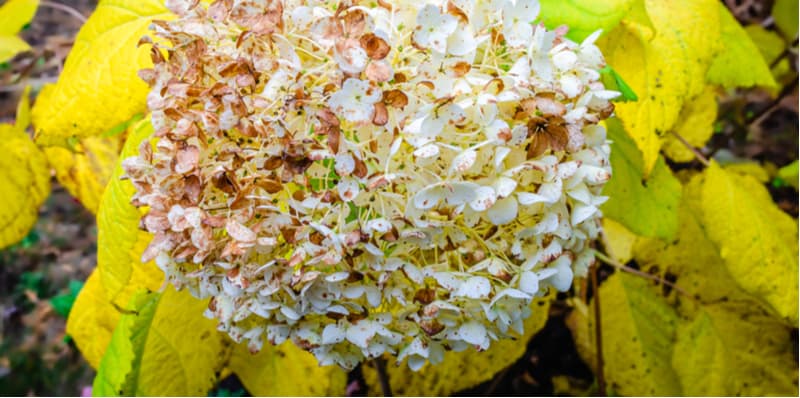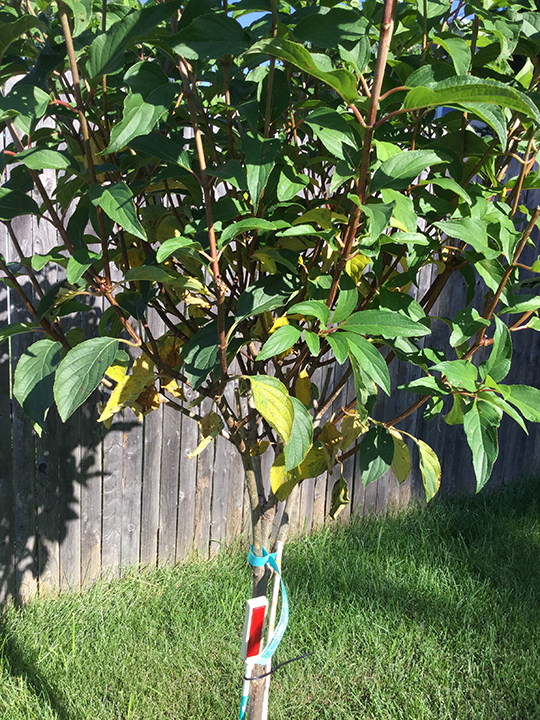Things about Hydrangea Leaves Turning Yellow
Some Known Details About Hydrangea Leaves Turning Yellow
Table of Contents5 Easy Facts About Hydrangea Leaves Turning Yellow ExplainedSome Of Hydrangea Leaves Turning Yellow10 Easy Facts About Hydrangea Leaves Turning Yellow ShownOur Hydrangea Leaves Turning Yellow PDFsEverything about Hydrangea Leaves Turning Yellow
The container needs to be large sufficient so the plant can grow and get every one of the water and nutrients it requires. Place the container on a veranda, or in an unethical spot on an outdoor patio. You can additionally replace the plant with a panicle hydrangea. Panicles enjoy the full sun.So, despite the selection, plan ahead and see to it your plant has a lot of protection from the wind. You have a couple of options right here. You can transplant to a new location, or you can develop a wind barrier utilizing another plant, or fence. To develop a wind barrier you could, or a shrub to block the wind.
Decorative yard, Rose of Sharon, or Holly shrubs are simply a couple of concepts of plants you could make use of to obstruct the wind. If you need to transplant, locate a spot in your garden that is well secured from sunlight and wind. Transplanting is finest carried out in the loss or the springtime.
The plants area is the most important factor when it comes to obtaining established and appropriate growth. With a little planning on growing place and correct upkeep, you'll be able to ensure your hydrangeas!.
The Ultimate Guide To Hydrangea Leaves Turning Yellow

You can rescue the plant from yellow leaves by offering it the right light and positioning. If your plant gets yellow leaves, move it to a dark place. Area Hydrangea plants inside your home near an east-facing window. Dapple the plant with drapes or UV security sheets to obstruct direct warm.
, and temperature level changes can cause yellowing leaves and brown areas. If it gets also warm, the edges of the fallen leaves end up being yellow, transform brownish and create a crispy texture.

Some Known Details About Hydrangea Leaves Turning Yellow
But, yellow leaves in Hydrangeas are the initial indicators of disease invasion, often complied with by black areas, browning, drops, and wilting. Separate the infected or pest-infested plant from the healthy plants to stop condition spread. If it is a yard plant, eliminate all the contaminated leaves making use of disinfected tools and clean up all the particles.
So, removing helps Hydrangea shade unnecessary weight and coverage, permitting the development of brand-new leaves. The very best time to prune Hydrangeas is spring when the plant is prepared to grow foliage for the following period. Inspect for spent or unhealthy leaves and cut the base of a stalk that joins the leaves and stem.
Avoid reducing healthy and balanced or eco-friendly leaves, and do not get rid of even more than 25% of the plant's vegetation. The main reason behind the red leaves in Hydrangea is bad published here soil or ecological conditions.
Repot the plant every year in spring or every 2 years if the growth price is slow-moving.
An Unbiased View of Hydrangea Leaves Turning Yellow

There are 6 primary factors why this could occur:: The plant does not get sufficient sunlight.: The roots are either as well wet or also dry.: The plant is as well cold.: The dirt is not acidic or alkaline enough for the hydrangea.: The plant isn't getting the appropriate nutrients it requires to remain healthy and balanced.
Each factor influences the plant in a manner that can be fixed if we understand how to take care of hydrangeas the proper way. When we discuss inadequate light for hydrangeas, we imply that the plant isn't getting adequate sunshine. Hydrangeas prefer brilliant light, published here but not straight, scorching sun. They usually thrive ideal with early morning sun and afternoon shade.
Without sufficient sunlight, the fallen leaves can transform yellow, the plant can come to be weak, and it may produce fewer blossoms. To make sure a hydrangea gets appropriate light, it ought to be read this article placed in an area where it can appreciate the early morning light and be shielded from the extreme afternoon sunlight. Overwatering is when a hydrangea plant gets more water than it requires.
Without sufficient air, the origins can not do their job well, and the plant starts to suffer. Yellow fallen leaves might be an indication that the plant is getting excessive water. On the other hand, dehydration takes place when the plant doesn't obtain enough water. Like individuals, plants require water to stay healthy.
Hydrangea Leaves Turning Yellow Things To Know Before You Buy
This trouble is common in the fall as the weather condition adjustments or if a hydrangea is grown in a spot where it doesn't get adequate heat from the sun. It is necessary to recognize the ideal problems for hydrangeas to stay clear of low-temperature stress and anxiety. For instance, the majority of hydrangeas grow ideal in areas 6 to 9, where the climate is milder.
It is necessary to recognize that this kind of yellowing is different from the yellowing triggered by issues like way too much water or otherwise enough light. Therefore, if the yellow leaves are primarily at the bottom of the plant et cetera of the plant looks healthy, it could simply imply that the leaves are just obtaining old.